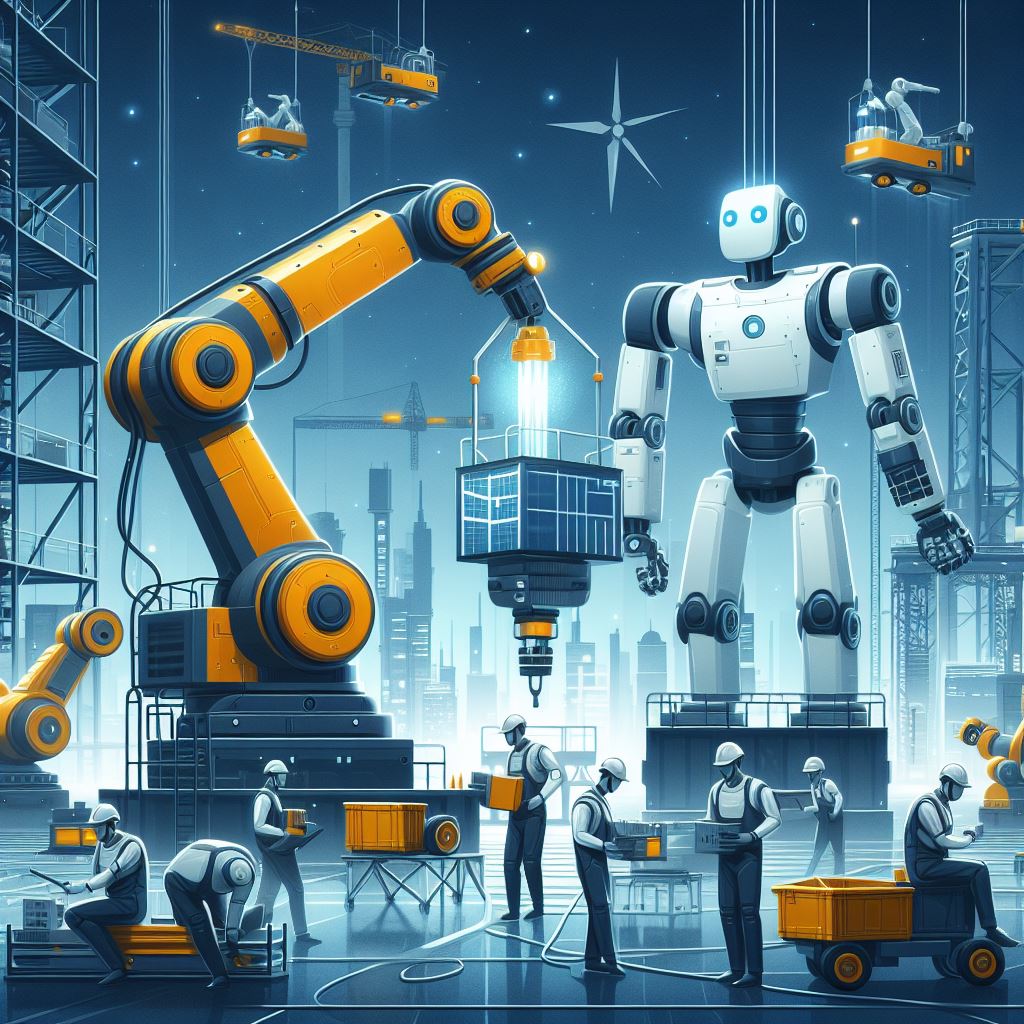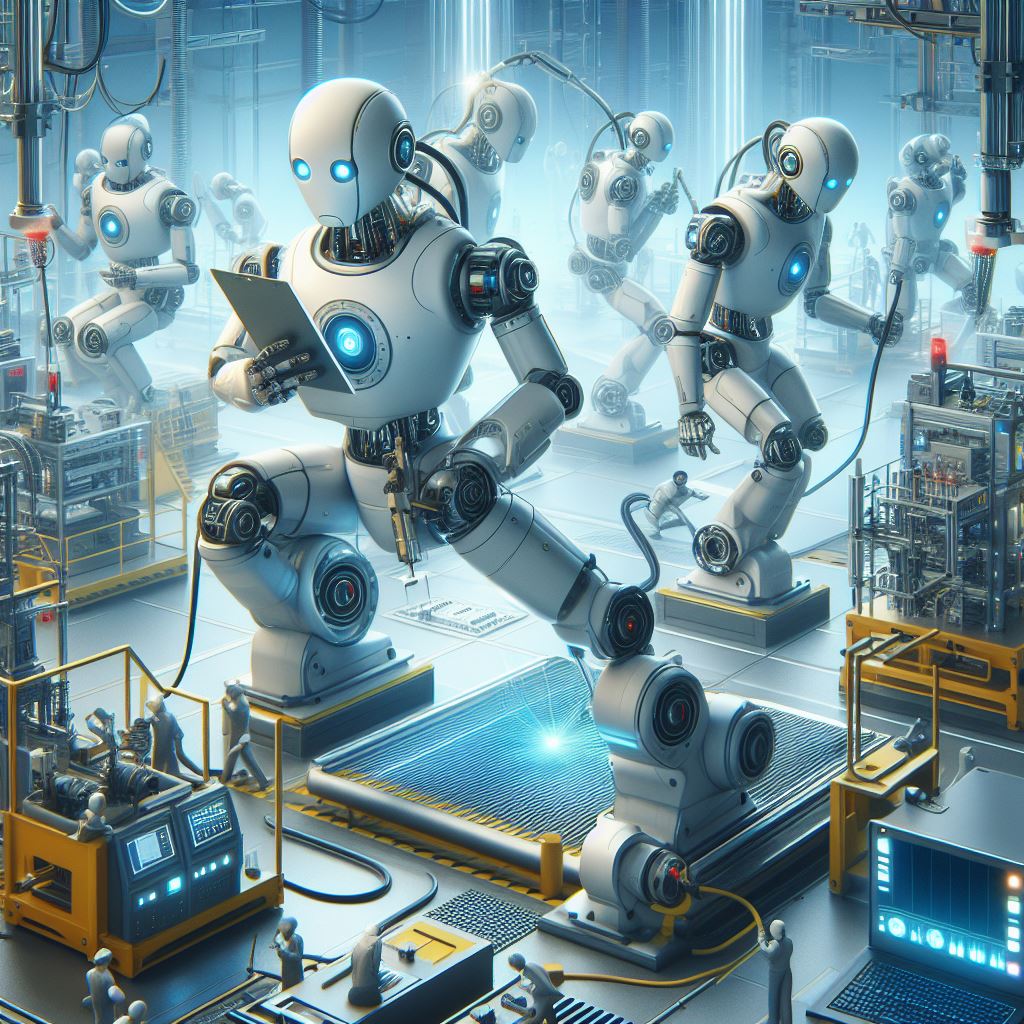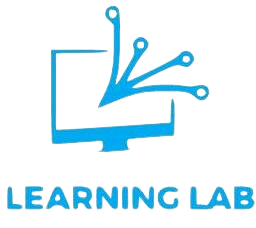
1. Introduction
Today, we’re going to address a topic that’s got everyone talking: Can robots steal our jobs? It’s a captivating journey into the world of automation and innovation, and we are pleased to have you along for the experience! So, buckle up and get prepared for a dialogue that would just alternate the manner you reflect onconsideration on the destiny of labor.
Defining Automation and Robotics: robots
When we speak about automation, we’re speaking about technology to make tasks easier and more efficient. Imagine your coffee maker brewing your morning cup without you having to do anything – that’s automation in action! Now, robotics is just like the next stage of automation. It’s all approximately designing and the usage of robots to do all sorts of cool stuff, from assembling vehicles to cleaning our floors. But do not worry, we will keep it easy and clean to understand. So, get prepared to explore the sector of automation and robotics like never earlier than!
Overview of the Debate: Robots vs Humans within the Workforce:
The massive debate about whether robots are buddies or foes within the place of work. On one facet, there are people who worry that robots will swoop in and take our jobs. But on the other side, there are also folks that trust that robots could actually make our work lives better, freeing us up to do more interesting and creative tasks. It’s a clash of thoughts that is shaking up industries everywhere. So, get prepared to dive deep into the arguments, weigh the proof, and perhaps even come away with a whole new angle at the destiny of work!
2. Understanding Robots: Creation and Capabilities
2.1 How Robots Are Made: Manufacturing and Design
In this phase, we’ll take a more in-depth look at the system of making robots. It all starts with the layout section, where engineers and architects brainstorm and plan how the robot will look and function. They make their blueprints and determine out what elements might be needed. Once the design is finalized, the manufacturing procedure kicks in. This includes placing together all of the pieces – from mechanical parts to digital components – to build the robot. It’s like building a complex puzzle, with each piece fitting together to bring the robot to existence.
2.2 What Robots Can Do: Exploring Tasks and Functions
Now that we recognize how robots are made, let’s delve into what they’re able to do. Robots can carry out a wide variety of obligations and capabilities, from the simple to the distinctly complicated. Some robots are designed for repetitive duties, like assembling products on a manufacturing facility line or sorting items in a warehouse. Others are prepared with superior sensors and programming that permit them to navigate complex environments, perform delicate surgical processes, or maybe help in seek and rescue missions.
2.3 Examples of Robot Uses: Different Industries and Areas
Let’s take a look at some real-world examples of how robots are being used across different industries and sectors.
- In production, robots are revolutionizing manufacturing approaches, growing efficiency, and lowering errors.
- In healthcare, robots are helping surgeons in appearing precise strategies and helping sufferers with rehabilitation.
- In agriculture, robots are automating responsibilities like planting, watering, and harvesting plants.
- And in space exploration, robots are venturing into the unknown, exploring distant planets and collecting valuable data. Throughout this phase, we will spotlight the numerous packages of robots and their effect on diverse fields of work and exploration.

3. Assessing Work Efficiency of Robots
Assessing the work efficiency of robots includes information of elements contributing to their performance, evaluating their efficiency with that of humans, and inspecting case studies demonstrating their performance in numerous contexts.
3.1 Factors Contributing to Work Efficiency: robots
Speed and Accuracy: Robots can perform repetitive tasks with regular speed and accuracy, often outpacing human competencies. They don’t be afflicted by fatigue or boredom, main to sustained productivity over long durations.
Precision and Consistency: Robots are programmed to execute tasks with specific actions, main to regular results. This is specifically valuable in manufacturing, where even minor deviations can result in defects or inefficiencies.
Automation and Optimization: Automation lets in robots to streamline techniques and put off human intervention in recurring tasks. Optimization algorithms allow them to conform to converting situations and optimize workflows for maximum performance.
24/7 Operations: Unlike people, robots can perform constantly with out breaks, leading to extended uptime and productiveness. This is nice in industries requiring spherical-the-clock manufacturing, together with logistics or healthcare.
Safety and Risk Mitigation: Robots may be deployed in dangerous environments or perform dangerous duties without risking human protection. This enhances typical efficiency through lowering accidents and downtime related to administrative center injuries.
3.2 Comparison of Robot Efficiency vs. Human Efficiency: robots
Speed and Consistency: Robots excel in duties requiring excessive-pace operations and regular performance. While people might also own extra adaptability and problem-fixing skills, they regularly war to keep the same level of velocity and consistency over prolonged intervals.
Complex Tasks and Creativity: Humans outperform robots in obligations requiring complex selection-making, creativity, and emotional intelligence. Robots lack the intuition and adaptableness of humans, proscribing their effectiveness in dynamic environments or duties requiring nuanced information.
Cost and Scalability: Robots may be price-effective for repetitive, labor-extensive duties, particularly when thinking about lengthy-time period operational expenses. However, preliminary investment and maintenance costs may be excessive. Human hard work, at the same time as more bendy, also can be extra expensive and difficulty to variability.
3.3 Case Studies Demonstrating Work Efficiency in Different Contexts:
Manufacturing: Automotive companies like Tesla make use of robotic hands for assembly tasks, notably increasing manufacturing speed and precision whilst lowering errors compared to guide exertions.
Logistics: Amazon’s success centers employ robots for duties consisting of sorting and transporting packages, permitting quicker order processing and cargo, particularly for the duration of top seasons.
Healthcare: Surgical robots like the da Vinci Surgical System help surgeons in performing minimally invasive tactics with better precision and dexterity, leading to faster recovery times and reduced threat of complications for patients.
Agriculture: Agricultural robots, inclusive of self reliant harvesters or weeding robots, optimize crop manufacturing by successfully appearing duties like planting, harvesting, and maintenance, thereby enhancing yield and decreasing exertions expenses.
Space Exploration: Robots like the Mars rovers (e.g, Curiosity and Perseverance) enable exploration and records collection on remote planets without risking human lives, expanding our information of the universe.
4. The Current Landscape robots
The current landscape of automation is characterized by way of fast boom, evidenced by means of statistics on automation boom, examples of jobs changed by way of robots, and the effect on employment quotes.
4.1 Statistics on Automation Growth: robots
Global Adoption: Automation technology, along with robotics, artificial intelligence, and machine learning, are experiencing considerable adoption across industries globally. According to reports from market studies corporations inclusive of McKinsey and PwC, the global market for industrial automation is projected to retain developing at a massive charge within the coming years.
Investment Trends: Companies are more and more making an investment in automation to improve efficiency, lessen charges, and live competitive in the marketplace. This is pondered in rising investments in robotics and automation technologies by corporations across sectors including production, logistics, healthcare, and finance.
Job Displacement: As automation technology increase, the scope of tasks carried out with the aid of robots and AI structures maintains to amplify, leading to concerns approximately task displacement. Studies recommend that a significant portion of current jobs is at risk of automation, mainly the ones concerning recurring, repetitive tasks.
4.2 Examples of Jobs Replaced by Robots:
Manufacturing: Traditional assembly line jobs, which include those in automobile production, have been an increasingly replaced by robot arms and automated systems. Robots excel in tasks requiring precision and repetitive motions, main to their huge adoption in production plant life.
Retail and Hospitality: Retail shops and restaurants are deploying self-checkout kiosks, automated inventory management structures, and robot assistants to streamline operations and reduce labor prices. This fashion has implications for jobs such as cashiers and warehouse people.
Transportation: The upward thrust of independent automobiles and drones threatens to disrupt industries reliant on human drivers, which include trucking, shipping services, and taxi companies. While absolutely self sufficient transportation systems are still in development, advancements in this area pose challenges to traditional jobs in the zone.
4.3 Impact on Employment Rates:
Job Losses: The automation of certain tasks and roles can cause job losses in affected industries, particularly among low-skilled workers performing ordinary tasks. This can contribute to unemployment and underemployment in the short term, in particular if displaced workers battle to transition to new roles.
Job Transformation: While automation may additionally do away with certain jobs, it additionally creates new possibilities for employment. As generation advances, new roles emerge in fields which include robotics engineering, data analysis, and software development, requiring capabilities in STEM (technology, generation, engineering, and arithmetic).
Skill Upgrading: Automation underscores the significance of upskilling and reskilling employees to evolve to converting job requirements. Lifelong mastering and education packages grow to be crucial for workers to remain aggressive inside the hard work marketplace and secure employment in roles that supplement automation technology.

5. Advantages of Robot Workforce
The creation of a robots offers several blessings for businesses, such as increased performance and productiveness, price-effectiveness, and decreased human blunders and protection hazards.
Increased Efficiency and Productivity:
Robots can carry out responsibilities with consistent pace and precision, main to enhanced performance and productivity in diverse industries. They can paintings constantly without breaks or fatigue, ensuing in optimized workflows and quicker manufacturing cycles. Additionally, robots can deal with repetitive tasks more successfully than humans, freeing up human workers to attention on greater complicated and cost-delivered activities.
Cost-Effectiveness for Businesses:
While the preliminary funding in robotics and automation technology can be enormous, it often will pay off in the long run thru fee financial savings and advanced profitability. Robots can lower hard work costs by way of replacing manual hard work in tasks that are repetitive, dangerous, or hard work-extensive. Moreover, automation can lessen overhead costs associated with human resources management, such as training, benefits, and employee turnover.
Reduced Human Error and Safety Hazards:
Unlike human workers, robots perform with consistent precision and accuracy, minimizing the threat of errors in tasks which include production, assembly, and satisfactory manage. This ends in higher product first-rate and reduced waste, in the end enhancing customer satisfaction. Furthermore, robots can be deployed in hazardous or risky environments, inclusive of nuclear facilities or mines, wherein human protection can be compromised. By replacing people in those environments, robots help mitigate risks and enhance place of job protection.
6. Human Skills vs. Robot Skills
When comparing human capabilities with robotic skills, certain tasks are better suitable for human beings because of the significance of emotional intelligence and creativity. Education and upskilling play a crucial function in getting ready human beings for tasks where those capabilities are paramount.
Tasks Better Suited for Humans:
Complex Decision-Making: Humans excel in responsibilities requiring complex decision-making, critical thinking, and problem-solving abilities. These abilities are important in situations wherein there’s ambiguity, uncertainty, or the need to weigh multiple elements simultaneously.
Interpersonal Communication: Humans possess the ability to recognize nuances in verbal exchange, inclusive of tone of voice, body language, and facial expressions. This makes them better appropriate for roles concerning customer service, negotiation, conflict resolution, and relationship-building.
Creative Endeavors: Creativity is a uniquely human trait that drives innovation, artistic expression, and out-of-the-box thinking. Humans are higher equipped to generate novel thoughts, ideas, and answers to complicated problems, fueling progress in various fields.
Importance of Emotional Intelligence and Creativity:
Emotional Intelligence: Emotional intelligence, encompassing self-attention, empathy, and social talents, is important for effective interpersonal interactions and management. Humans can understand and reply to the feelings of others, fostering consider, collaboration, and teamwork.
Creativity: Creativity includes the ability to generate original thoughts, insights, and answers by using connecting disparate ideas or perspectives. It fuels innovation and drives progress in fields consisting of art, design, science, and entrepreneurship. Creativity allows human beings to conform to converting occasions, envision opportunities, and triumph over challenges in novel ways.
Role of Education and Upskilling:
Emphasis on Soft Skills: Education performs a crucial role in cultivating human abilties which includes emotional intelligence, creativity, communication, and critical thinking. Schools and training programs should prioritize the development of these soft skills along technical competencies to prepare people for the demands of the future staff.
Lifelong Learning and Adaptation: Given the speedy tempo of technological advancement, continuous learningof and upskilling are important for individuals to stay relevant in the workforce. Lifelong learning initiatives, professional development programs, and vocational training can help human beings collect new skills, stay adaptable, and navigate career transitions efficaciously.
Integration of Technology: Education systems have to integrate technology into curriculum delivery to equip learners with digital literacy skills and familiarity with automation tools. This guarantees that people are organized to collaborate with and leverage generation efficiently of their professional endeavors.
7. The Future Outlook
The future of automation holds various predictions for trends, possibilities for human-robotic collaboration, and strategies for building a sustainable team of workers.
Predictions for Automation Trends:
Continued Adoption of AI and Robotics: Automation technology, which include artificial intelligence (AI) and robotics, are expected to keep advancing unexpectedly, main to increased adoption throughout industries. This trend will likely encompass both physical robotics for tasks like production and service robots for roles in healthcare, retail, and hospitality.
Expansion of Autonomous Systems: Autonomous structures, including self-riding vehicles and drones, are projected to turn out to be extra standard, remodeling transportation, logistics, and shipping offerings. As these technology mature, they may revolutionize the manner items and offerings are transported and distributed.
Integration of AI into Business Processes: AI-driven automation will increasingly be incorporated into diverse commercial enterprise approaches, from customer service and marketing to finance and supply chain management. Machine learning algorithms will enhance decision-making, optimize workflows, and personalize experiences for customers and personnel.
Opportunities for Human-Robot Collaboration:
Augmented Intelligence: Human-Robot collaboration will contain leveraging the strengths of both humans and robots to achieve most advantageous outcomes. Rather than changing humans totally, automation will increase human skills, allowing individuals to attention on responsibilities that require creativity, empathy, and complicated hassle-fixing.
Cobotics in Manufacturing: Collaborative robots, or cobots, will play a substantial role in production environments, operating along human wokers to enhance productivity and protection. Cobots excel in tasks that require precision and strength, whilst people provide flexibility, adaptability, and oversight.
AI-Assisted Decision-Making: AI systems will assist human beings in decision-making tactics by analyzing massive amounts of data, identifying patterns, and generating insights. Human experts will then interpret these insights and apply their domain understanding to make knowledgeable selections, making sure a balance between automation and human judgment.
Strategies for Building a Sustainable Workforce:
Investment in Skills Development: Businesses, education institutions, and governments have to put money into continuous skills development and lifetime learning initiatives to prepare individuals for the evolving labor marketplace. Upskilling programs must consciousness on growing human-centric capabilities which includes creativity, emotional intelligence, and critical thinking.
Promotion of Flexibility and Adaptability: Organizations should promote a culture of flexibility and adaptability, encouraging employees to embrace change, learn new skills, and pivot to new roles as automation reshapes activity landscapes. Cross-training programs and career pathways can facilitate easy transitions for workers affected by automation.
Ethical Considerations and Social Impact: As automation technology improve, it is vital to recollect the ethical implications and social impact of automation on society. Policies and guidelines must be implemented to make certain honest exertions practices, defend workers’ rights, and address ability inequalities springing up from automation-pushed job displacement.

